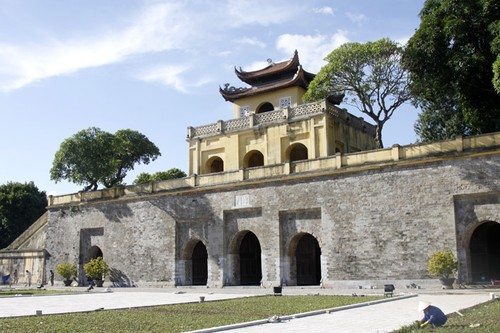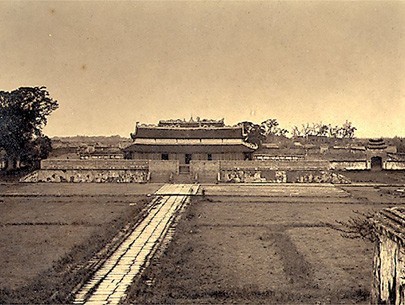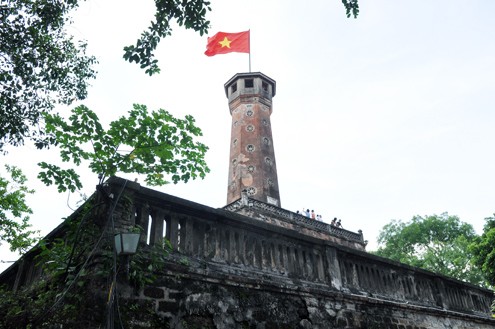(VOVworld) – Thang Long Royal Citadel is closely associated with the history of Hanoi. Over a thousand years old, this site is one of the priceless historical and cultural values of Vietnam. In 2010 it was included on the World Heritage List of UNESCO.
 |
When he ascended the throne more than 10 centuries ago, King Ly Cong Uan decided to move his capital from Hoa Lu to Dai La Citadel and built the royal city of Thang Long on the ruins of this ancient citadel. The new capital had three walls. The outer wall was named Kinh Thanh or Capital City and housed commoners. Royal City or Hoang Thanh in the middle housed the offices and residences of mandarins. The innermost Tu Cam Thanh or Forbidden Purple City was reserved for the King and Queen and several concubines. Although some parts of the structure were damaged during the war, what remains is enough to amaze any visitor: the main gate called Doan Mon, Kinh Thien Palace and the Flag Tower of Hanoi. In Kinh Thien Palace at the center of the royal city, there remain dragon-shaped stone steps built in the 15th century in the Le dynasty. While Hanoi was celebrating its millennium in 2010, archaeologists discovered in the heart of the imperial city the remains of the ancient royal city. These remains are evidence that prove the site was not only the political center and seat of dynasties, but also the cultural and economic center of the capital. Historian Le Van Lan explains:"At a depth of 4m are the remains of the ancient Dai La citadel. At 3m, archaeologists discovered traces of the culture of the Ly dynasty from the 11th to the 12th century and at 2 m objects from the Tran Dynasty in the 13th century have been found. These excavations have shown that the Royal City of Thang Long was the center of regional political power continuously for over a thousand years. "

In addition to unique architectural relics, thousands of artifacts representing cultures of different dynasties were found, reflecting Vietnamese history from the 7th to the 19th century under the Ly, Tran, Mac Le and Nguyen dynasties. Inside the ancient citadel are French buildings and relics including D67, the Headquarters of the Political Bureau of the Communist Party of Vietnam and Central Military Committee where decisions on how to win the anti-US resistance war were made. These relics prove that Hanoi was the political center of Vietnam through several historical periods. History Professor Phan Huy Le said:“ The most important offices of the state are concentrated around this place. This site, although it does not have a large area or imposing architectural works, holds great historical and cultural value for Vietnam. The site shows how Vietnam absorbs global values to develop a firm ideological foundation for its policies on national construction and defense".
 |
On August 1, 2010, the Imperial Citadel of Thang Long-Hanoi was declared a World Heritage Site by UNESCO. The site reflects important cultural changes which have shaped the culture of the Red River Delta for over a thousand years.